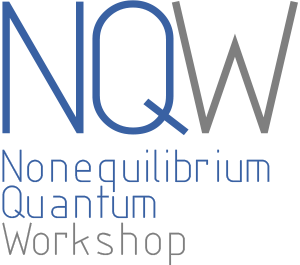
- This event has passed.
Shaken, not stirred: a recipe for ultrafast magnetic switching via phononic resonances
December 12, 2023 @ 16:30 - 17:00 CET
A. Kirilyuk1
1FELIX Laboratory, Radboud University, Toernooiveld 7, 6525 ED Nijmegen, The Netherlands
Strong light-matter interaction constitutes the bedrock of all photonic applications, empowering material elements to create and mediate interactions of light with light. Among others, phononamplified interactions were shown to bring a specific twist into this, in the infrared (IR) frequency range. Thus, phono-magnetic effects are the low-frequency analogues of inverse Faraday and Cotton-Mouton effects [1,2] where phonons, not electrons, mediate the interaction between light and spins. In this case, light couples to the spins indirectly by exciting coherent vibrations of the crystal lattice (phonons) that transfer angular momentum to the magnetic ions [3,4]. The optically driven chiral phonons in materials with strong spin-orbit coupling were shown to produce giant effective magnetic fields that exceed those previously seen by several orders of magnitude [5]. The mechanism allows for bidirectional control of the induced magnetization through phonon chirality that in turn can be controlled by the polarization of the laser pulse.
Here we show that through the resonant excitation of circularly-polarized optical phonons in paramagnetic substrates, one can permanently reverse the magnetic state of the substrate-mounted heterostructure [6]. To provide resonant excitation of the optical phonon modes, we use pulses from FELIX (Free Electron Lasers for Infrared eXperiments, Nijmegen, The Netherlands). Single pulses of IR/THz light with photon energy ranging between 25 meV and 124 meV (wavelength 10-50 μm) are typically used. With the handedness of the phonons steering the direction of magnetic switching, such effect offers a selective and potentially universal method for exercising ultrafast non-local control over magnetic order.
Moreover, a different behaviour, characterized by displacive modification of magnetic potentials, can be observed when exciting materials at phonon frequencies with linearly-polarized light. The magnetic switching was shown to create very peculiar quadrupolar domain patterns [7], confirming the mechanism. The mechanism appears to be very universal, and is shown to work in samples with very different crystallographic symmetry and magnetic properties, including weak ferromagnets [8] and antiferromagnets [9], but also completely different systems such as ferroelectrics. Using single-shot time resolved microscopy, we demonstrate that the dynamics of the domain formation proceeds via a strongly inhomogeneous magnetic state resulting in a self-organization of magnon-polarons [10]. This we could arguably relate to the spin-wave instabilities that appear due to the very large amplitude of precessional magnetic motion in the switching process.
- A.V. Kimel, A. Kirilyuk, P.A. Usachev, R.V. Pisarev, A.M. Balbashov, and Th. Rasing, Nature 435, 655 (2005)
- A. M. Kalashnikova et al, Phys. Rev. Lett. 99, 167205 (2007)
- T. F. Nova et al, Nature Phys. 13, 132–137 (2017)
- D. M. Juraschek, M. Fechner, A. V. Balatsky, N. A. Spaldin, Phys. Rev. Mater. 1, 014401 (2017)
- D.M Juraschek, T. Neuman, & P. Narang, Phys. Rev. Res. 4, 013129 (2022)
- C.S. Davies, F.G.N. Fennema, A. Tsukamoto, I. Razdolski, A.V. Kimel, A. Kirilyuk, arXiv:2305.11551 (2023)
- A. Stupakiewicz et al, Nature Phys. 17, 489 (2021)
- T. Janssen, M. Gidding, C. S. Davies, A. V. Kimel, and A. Kirilyuk, Phys. Rev. B 108, L140405 (2023)
- P. Stremoukhov et al, New J. Physics 24, 023009 (2022)
- M. Gidding, T. Janssen, C.S. Davies, and A. Kirilyuk, Nature Commun. 14, 2208 (2023)


